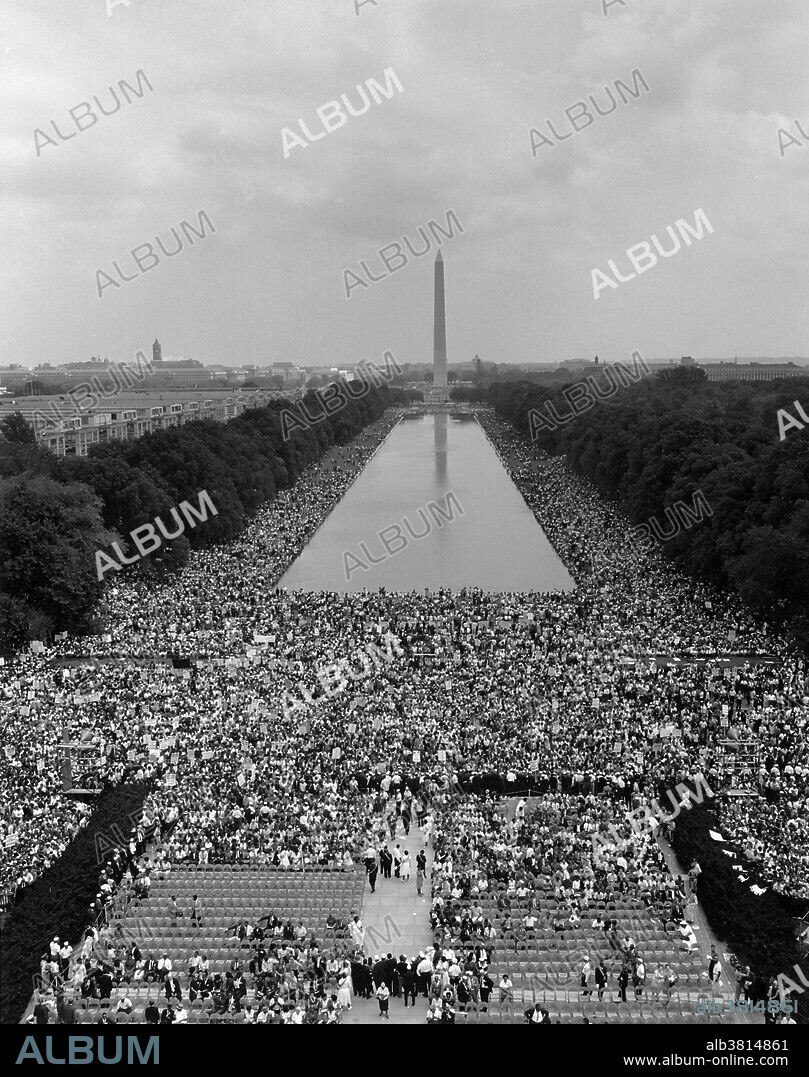alb3814861
March on Washington for Jobs and Freedom, 1963

|
Zu einem anderen Lightbox hinzufügen |
|
Zu einem anderen Lightbox hinzufügen |



Haben Sie bereits ein Konto? Anmelden
Sie haben kein Konto? Registrieren
Dieses Bild kaufen
Titel:
March on Washington for Jobs and Freedom, 1963
Untertitel:
Siehe automatische Übersetzung
Entitled: "Aerial view of the crowd assembling with a good view of the Reflecting Pool and the Washington Monument." The March on Washington for Jobs and Freedom was one of the largest political rallies for human rights in United States history and called for civil and economic rights for African-Americans. On Wednesday, August 28, 1963. Martin Luther King, Jr., standing in front of the Lincoln Memorial, delivered his historic "I Have a Dream" speech in which he called for an end to racism. The march was organized by a group of civil rights, labor, and religious organizations, under the theme "jobs, and freedom". Estimates of the number of participants varied from 200,000 to 300,000; it is widely accepted that approximately 250,000 people participated in the march. Observers estimated that 75-80% of the marchers were black. The march is credited with helping to pass the Civil Rights Act (1964) and preceded the Selma Voting Rights Movement which led to the passage of the Voting Rights Act (1965).
Bildnachweis:
Album / NARA/Science Source
Freigaben (Releases):
Model: Nein - Eigentum: Nein
Rechtefragen?
Rechtefragen?
Bildgröße:
1548 x 1959 px | 8.7 MB
Druckgröße:
13.1 x 16.6 cm | 5.2 x 6.5 in (300 dpi)
Schlüsselwörter:
AMERIKANER • BASSIN • BERÜHMT • BERÜHMTE PERSÖNLICHKEIT • DEPOT • EREIGNIS • KUNDGEBUNG • MARSCH AUF WASHINGTON • MENSCHENRECHTE • NOTABEL • OBELISK • PROMINENZ • SCHWARZAFRIKANER • SCHWARZER • STAPEL
 Pinterest
Pinterest Twitter
Twitter Facebook
Facebook Link kopieren
Link kopieren Email
Email
